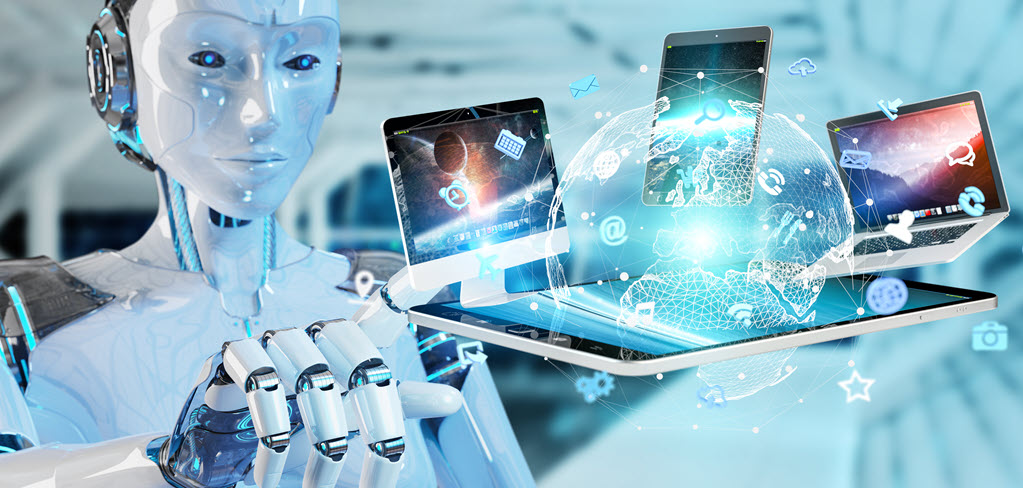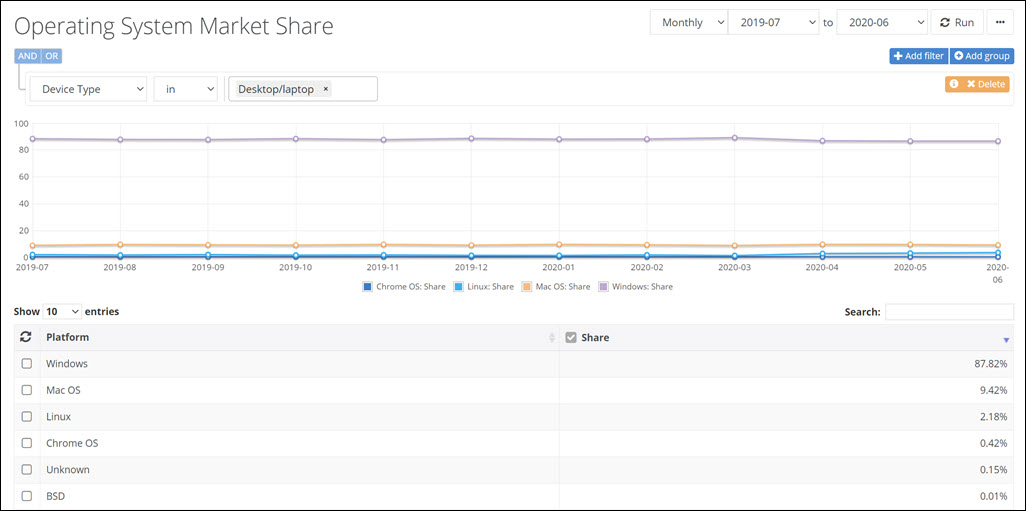
Anyone who tries to predict the future is a fool. We can’t predict what will happen next month, much less next year or five years from now.
So I’m going to make a prediction.
In the next five years, Apple will come to dominate personal computing in much the same way that it dominates the smartphone market today. Windows will not disappear, but it will be evident that Apple is in charge of the future of personal technology for consumers and small businesses.
Most of Apple’s preparations for this moment have been behind the scenes. Until recently, Apple had effectively abandoned the computer market. Development of Macs had all but stopped as Apple focused on the incredible profits from phone sales.
At its Worldwide Developer Conference in June, Apple laid out a vision that includes Macs and encompasses all of our personal devices, taking advantage of the opening created by Intel’s failures and Microsoft’s pivot away from Windows. Apple is executing so well that there is a good chance it will fulfill the promise of last month’s announcements.
Let me give you an overview of Apple’s announcements and the upcoming evolution of personal computing. In the next article, I’ll give you some background to put Apple’s announcements in perspective.
Apple’s plans to push the Mac to a different level
Three things were revealed at WWDC that will carry Macs forward.
1
Macs will migrate to a new ARM-based chip platform designed and controlled by Apple, optimized for Mac hardware and macOS. The first Macs with Apple-built chips will appear later this year, and the plan is to migrate away from Intel chips in all Mac models in the next 2-3 years. ARM chips are designed for longer battery life, lower temperatures, and improved connectivity. Apple will be building in cross-platform compatibility and new levels of performance.
This will have a significant impact on the entire industry. Although there will undoubtedly be hiccups for the first couple of years, Apple successfully migrated to a brand new chip platform in Macs once before, when it moved from PowerPC to Intel chips in 2005, so its track record leads us to think it can do it again.
Windows computers run on Intel processors, and Intel has failed to keep up. Frustration with the shortcomings of Intel chips caused Microsoft to try to move Windows to ARM chips twice before, with Windows RT (2012) and Windows on ARM (2016). It failed badly both times. Microsoft has continued to work on ARM compatibility, and new ARM-based Windows devices are being released this year, but all indications are that Microsoft will fail again. There are architectural reasons that it may be impossible for Microsoft to make Windows run well on ARM chips, no matter how it tinkers.
2
Macs running on Apple silicon will be able to run iOS apps natively. Macs will be able to run iPad and iPhone apps, as well as Windows and Linux apps. This will encourage developers and might lead to innovations that change the landscape. It is an incentive for Apple to bring touchscreens to Macs, which it has resisted for superstitious reasons. Or how about this: as chips become more powerful, imagine an iPhone that begins running a full-featured version of macOS when it is plugged into a monitor, keyboard, and mouse – a vision that Microsoft and Samsung both chased and failed to deliver in the last few years.
3
As usual, the redesigned elements of iOS and macOS are consistent and beautiful. This should not be taken for granted. Microsoft has not been able to smooth out Windows’ rough edges for years; at some point, that makes a difference in people’s perceptions. We are thrown from Settings to Control Panel; we subliminally notice that icons are inconsistent and search is cluttered and ads are constantly popping up; each new upgrade to Windows brings crashes and frustration. Consumers are once again getting the message that Macs just work.
Windows will be sold on more computers, but Apple will take all the profits

Macs have consistently had about 10% market share in the US. I expect that to increase over the next five years. As it does, I expect Apple to be taking a larger share of the profits from selling computers, and there will be a much sharper change in computer sales to consumers and small businesses.
Overall Windows market share will not drop sharply. There will continue to be a large volume of computer sales in two categories, which will partially conceal the significance of the changes for consumers and small businesses.
1
Windows is a legacy product that will continue to be used by enterprises. Large businesses are conservative and slow to change. They depend on old hardware and legacy software that requires Windows. The volume of computers used in business will dominate sales charts for many years. Those computers are managed by IT departments tasked with keeping them running, stable, and secure. Enterprise users are shielded from many of the Windows hassles that we deal with daily.
2
It is still possible to run Windows on cheaper hardware than anything that can be purchased from Apple. Low-end sales will account for a large volume of sales of personal computers running Windows.
But the profits from personal computing are going to start flowing to Apple. Profit margins are low for enterprise computer sales, and nonexistent for cheap computers on the bottom shelf at Best Buy. At the moment, PC manufacturers are doing well selling relatively expensive laptops. Those are the sales that Apple will take. Remember, Android outsells iPhones by large margins in unit sales, but Apple takes virtually all of the profits from phone sales worldwide.
There might be a Mac in your future. In the next article, I’ll give you some background about ARM chips, Intel’s failures, and why Microsoft might not care much about this change – might even be relieved to know that Apple is stepping up.

Appreciate the future vision! I agree that Apple is great at milking profits from a smaller market share – my kind of business. Their tech is top rate,…but…
1. Microsoft has access to ARM chips too and will successfully migrate PCs as well. I have used two versions of Surface products over last few years and they are great machines. They are on par with Mac without a doubt.
2. I used several generations of Macs but eventually moved away because of the need to use specialised programs requiring Windows. If Apple could successfully run full versions of these without having to rely on bootcamp partitions and emulators, then I’d probably go Mac. Also need a way of being able to backup / clone these partitions successfully.
3. Apple appears to have stopped innovating in last few years, instead relying on incremental upgrades. This is profitable for a cashcow but can’t last. Microsoft on the other hand is creating new markets e.g. surface pc, duo, neo. What has Apple created?
4. Agree MacOS works well. ….as you say it just works. But they excessively control everything if you are in rhe echo system. Unless you are a Apple convert, this leaves a bad taste in your mouth. Besides, windows has improved a lot, and does the job pretty well….at least good enough to satisfy me.
5. Microsoft customer service has improved a lot, and native their anti-virus works well.
I’ve been a Windows person for 25 years, so I understand what you’re saying, and until this year I would’ve agreed with almost all of it.
But the Apple ARM chips are the innovation that Apple has been lacking for many years. They’ll take advantage of a market opportunity that is partially of Microsoft’s making. Specialized processors for a closed operating system allow things to be done that will outstrip the approach that Intel and Microsoft have used for so many years, generalized processors supporting a wide variety of generalized hardware and a relatively open operating system.
The first generation of M1 chips from Apple are relatively lightweight, unable to support higher end PCs, limited in their memory architecture. And they’re freaking engineering marvels! The specs are unbelievable. Imagine what they’ll be like after another generation or two. And Apple is going to add a feature that will be instantly appealing to consumers: always on connectivity, just as we are accustomed to with our phones.
In the next couple of articles I explain why I think Microsoft will never be able to make Windows run well on ARM-based computers. By next year I expect Microsoft will offer online virtual Windows PCs running on Azure for enterprises. It may take longer for them to have consumer offerings, but perhaps by that time Windows programs will be able to run well in emulation on ARM processors. Either way, at that point Microsoft has no reason to care what the architecture is of a laptop. The road will be clear for Apple to take over the high-end laptop market.